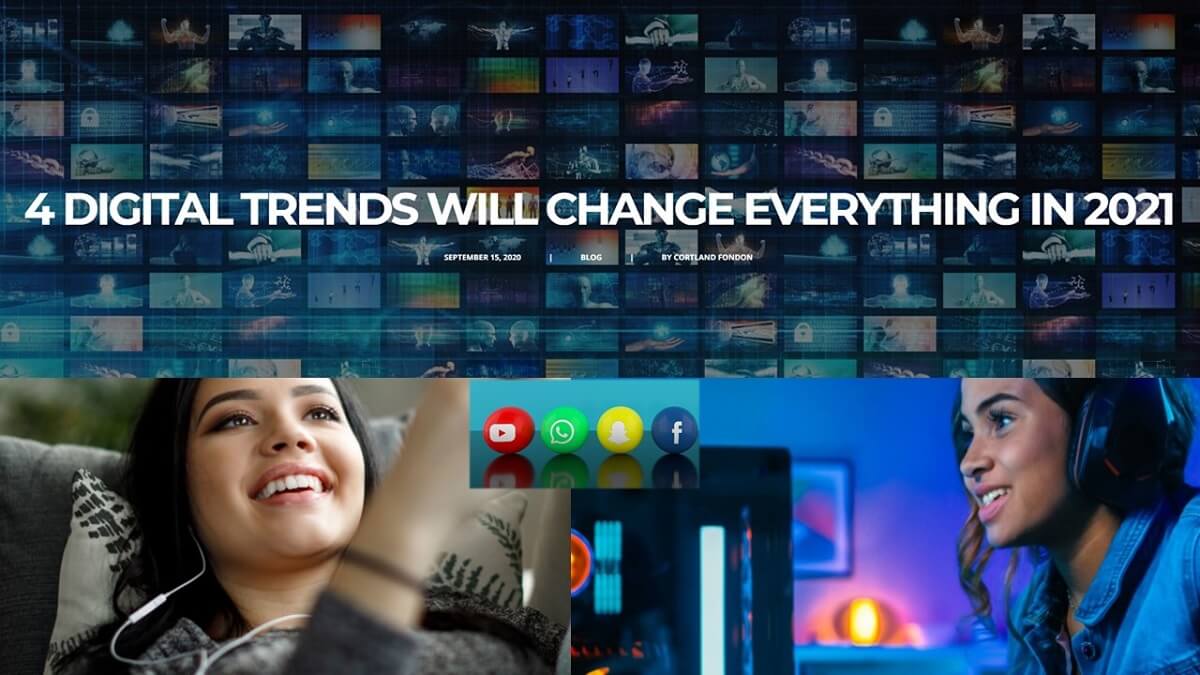As company leaders, we try to plan for everything. Whether on paper or in the backs of our minds, we formulate game plans and responses for account shifts, key people leaving, fires in the building, the loss of files, upset clients, loss of revenue, and any number of other unexpected scenarios. None of us anticipated a pandemic that would change everything we know about consumer behavior and the rules for moving forward.
Over the past six months, COVID-19 has proven to be the ultimate disruptor for marketing and advertising and nowhere are we seeing that more than on the digital side of the equation. Almost by necessity, thanks to the national lockdown, consumers moved even further online than they had before; shopping, watching, and gaming at record levels. That isn’t likely to change as we pull out of the pandemic, leaving advertising agencies and digital shops with some challenging and, honestly, exhilarating opportunities.
Here are four trends we think will continue disrupting Digital in the coming six months to a year:
Look for changes in the social media power structure.
Facebook could be at its peak.
There is quite a bit of news surrounding social platforms doing what’s “right” versus “profiteering off of misinformation.” For a few years, Facebook has been on the wrong side of this debate. Also, Facebook continues to be the home of negativity around politics and social issues. To compound this negativity, Facebook has “tried” to impose higher standards on their ad policies, but these restrictions have tended to be grey and not always consistently enforced. As a result, a number of significant brands have restricted their investment into the platform in an attempt to force the company to make changes quickly. By 2021, we’ll see what, if any, effect those boycotts have had.
Instagram is on the rise.
They’ve recently seen an uptick in younger users, and the content is less focused on issues and more focused on fun and engaging entertainment. Instagram has also learned from Facebook’s advertising mishaps, which shouldn’t be surprising considering Instagram is owned by Facebook. Recently, direct response campaigns have seen higher performance across the Instagram platform as compared with Facebook. If a brand has not yet made Instagram a priority, they should now.
Snapchat + TikTok.
Both platforms have seen considerable increases in adoption over the past year, but brands haven’t really found their place on the platform yet. In the past few months, TikTok has gotten a lot of attention (and a number of suitors) due to President Trump’s disdain with the platform and its Chinese ownership. Time will tell how TikTok responds and how brands begin to assimilate into these platforms to reach a much younger audience than that of Facebook.
Facebook Messenger + Chatbots.
Brands need to begin adopting strategies around messenger apps. 1.3 BILLION users are active on Facebook Messenger. The adoption of messenger apps is not to say that communicating directly with customers on Facebook walls, Tweets, or Instagram comments is dead. Far from it. But there’s an enormous opportunity to improve customer communication with a Facebook Messenger strategy in place.
Look for an extension of connected TV.
We have seen a considerable uptick in “cord-cutters.”
Consumers are watching their shows and movies across multiple platforms, devices, day-parts, etc. It’s about time brands stop looking at TV and Digital Video separately and start looking at a “video” program buy.
Increasingly, viewership is fractionalized.
It’s time for brands to evaluate whether or not their media buys are reaching audiences cross-channel. Smart, well-planned media buys are more important than ever to not just intersect with consumers, but to meet them when and where that intersection will most influence purchase behavior.
Video is not optional. Video is mandatory.
It’s no longer optional for brands to create videos for social content or ads.
Every day, consumers take in volumes of video content, and if you’re not providing them video creative, they’re less likely to engage.
Video is portrait and landscape.
Thanks to Facebook and Instagram stories, TikTok and Snapchat consumers are now trained to watch videos both in portrait mode and landscape. The debut of Quibi last spring only fueled that expectation with content being presented in both formats. To see the extraordinary opportunities available shooting in the non-traditional vertical format, just look at this iPhone film from Oscar-winner Damian Chazelle for Apple.
Brands must identify new opportunities.
How do you create a library of videos that will sustain and engage over a long period? How do you plan your shoots around delivering assets that fit into these orientations? These are challenges and opportunities brands need solutions for and that clients are already asking agencies to address.
Gamers continue to gain influence.
25% of consumers watch Livestream, or recorded videos of others playing games each week.
For Millennials and Gen-Z, it’s more like 50%. As this fall marks the beginning of this generation’s console wars and new publishers enter the “game streaming” space, we expect the consumption of video game streaming to continue to grow.
Authenticity is the key.
The task of advertising and marketing to a cohort that hates advertising and marketing is admittedly a tall order. But it can be done and done very successfully. The key is meeting consumers where they are, being relevant, and not trying to snow them. Here’s how we did it and nailed a high score for Papa John’s.
In our business, nothing moves faster than the digital landscape and it’s even more challenging when you consider we’re targeting consumers who’d be thrilled if they never saw another ad. That’s where the challenger mindset has to kick in. Looking at challenges and changes as opportunities is the key to delivering quicker, smarter, and better solutions that really connect. Lean in. The digital world is changing every day. Those who ignore that are destined to wake up six months from now and wonder where everybody went.
CORTLAND FONDON is director of digital media and strategy at LOOMIS, the country’s leading challenger brand advertising agency and a top Dallas advertising agency for digital, social, mobile and user experience. For more about challenger branding, advertising and marketing, leadership, culture and other inspirations that will drive your success, visit our blog BARK! The Voice of the Underdog and catch up on all of our posts.
For more about LOOMIS, or to discuss how we can help your company succeed, CLICK HERE








